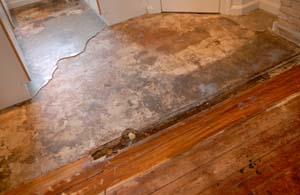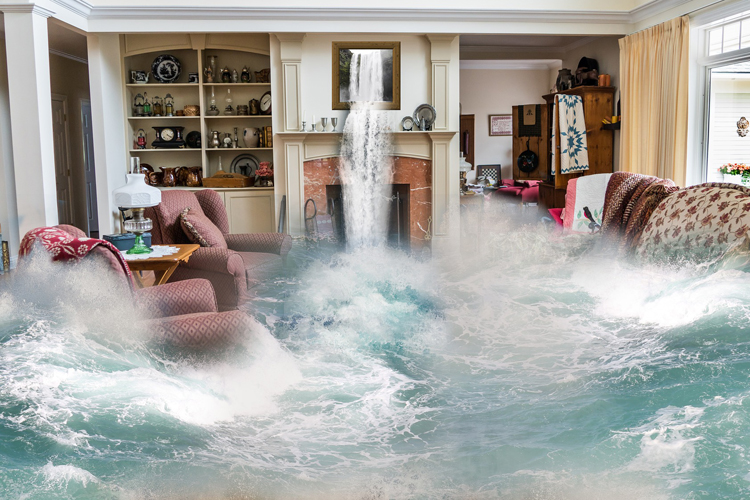Do's & Don'ts of Water Restoration.
Do's & Don'ts of Water Restoration.
Blog Article
We have come across this article involving Keeping Your Home Safe This Holiday Season down the page on the net and reckoned it made sense to talk about it with you in this article.

Water gives life, water intrusion on components where it's not expected to be can result in damage. It can peel off away surface areas and also erode the structure if the water saturates right into your structure. Mold and mildew also prosper in a moist setting, which can be dangerous for your wellness. Houses with water damage scent old and also moldy.
Water can originate from lots of resources such as tropical storms, floods, burst pipelines, leaks, and also drain problems. In case you experience water damage, it would certainly be great to recognize some security preventative measures. Below are a couple of standards on exactly how to take care of water damage.
Do Prioritize Home Insurance Policy Coverage
Water damage from flood dues to hefty winds is seasonal. Nevertheless, you can likewise experience an abrupt flood when a defective pipeline unexpectedly bursts into your home. It would certainly be best to have house insurance coverage that covers both acts of God such as natural tragedies, and emergency situations like busted plumbing.
Do Not Fail To Remember to Shut Off Utilities
This reduces off power to your whole residence, protecting against electrical shocks when water comes in as it is a conductor. Do not neglect to transform off the primary water line valve.
Do Remain Proactive as well as Heed Climate Notifies
Storm floods can be extremely unpredictable. Remain aggressive and also ready if there is a background of flooding in your neighborhood. Pay attention to evacuation cautions if you live near a creek, river, or lake. Secure belongings from the very beginning and also basement, after that placed them on the highest feasible degree. Doing so decreases possible residential property damages.
Don't Ignore the Roof
Prior to the weather condition transforms frightful, make sure you have a roof covering inspection. It would certainly be prudent to get this solution each year as it can mitigate complicated issues. You can stay clear of rain damage if there are no holes and also leaks in your roofing. Your roofing contractor will certainly likewise take care of damaged rain gutters or any other indicators of weakening. This will certainly protect against water from moving down your wall surfaces and also saturating your ceiling.
Do Pay Attention to Tiny Leaks
A ruptured pipe does not occur over night. Generally, there are red flags that indicate you have weakened pipelines in your house. You might notice bubbling paint, peeling wallpaper, water touches, water stains, or trickling sounds behind the wall surfaces. At some point, this pipeline will certainly break. Ideally, you must not await things to intensify. Have your plumbing fixed before it results in massive damages.
Don't Panic in Case of a Ruptured Pipeline
When it comes to water damage, timing is key. Thus, if a pipeline bursts in your residence, immediately closed off your primary water valve to reduce off the source. Call a reliable water damage repair professional for help.
Water offers life, water invasion on parts where it's not meant to be can result in damage. Homes with water damages smell musty and also old.
Water damage from flooding charges to heavy winds is seasonal. You might notice gurgling paint, peeling wallpaper, water touches, water discolorations, or trickling sounds behind the wall surfaces. When it comes to water damage, timing is crucial.
Some Do's & Don't When Dealing with a Water Damage
DO:
Make sure the water source has been eliminated. Contact a plumber if needed. Turn off circuit breakers supplying electricity to wet areas and unplug any electronics that are on wet carpet or surfaces Remove small furniture items Remove as much excess water as possible by mopping or blotting; Use WHITE towels to blot wet carpeting Wipe water from wooden furniture after removing anything on it Remove and prop up wet upholstery cushions for even drying (check for any bleeding) Pin up curtains or furniture skirts if needed Place aluminum foil, saucers or wood blocks between furniture legs and wet carpet Turn on air conditioning for maximum drying in winter and open windows in the summer Open any drawers and cabinets affected for complete drying but do not force them open Remove any valuable art objects or paintings to a safe, dry place Open any suitcases or luggage that may have been affected to dry, preferably in sunlight Hang any fur or leather goods to dry at room temperature Punch small holes in sagging ceilings to relieve trapped water (don't forget to place pans beneath!); however, if the ceiling is sagging extremely low, stay out of the room and we'll take care of it DO NOT:
Leave wet fabrics in place; dry them as soon as possible Leave books, magazines or any other colored items on wet carpets or floor Use your household vacuum to remove water Use TV's or other electronics/appliances while standing on wet carpets or floors; especially not on wet concrete floors Turn on ceiling fixtures if the ceiling is wet Turn your heat up, unless instructed otherwise

Hopefully you enjoyed reading our post about Safety Tips To Prevent Fire And Water Damage. Thanks for finding the time to read through our short article. Loved our article? Please share it. Help somebody else check it out. Thanks a lot for going through it.
Report this page